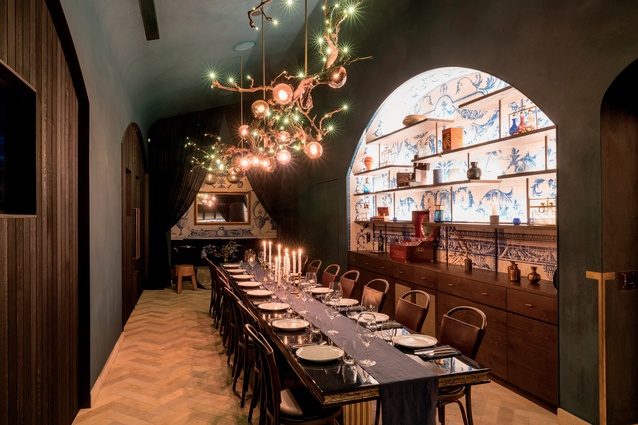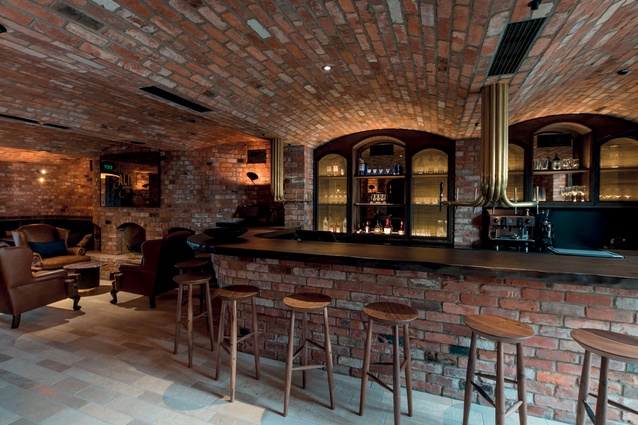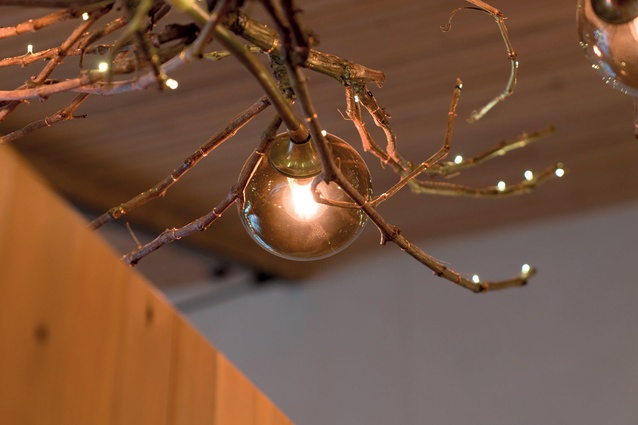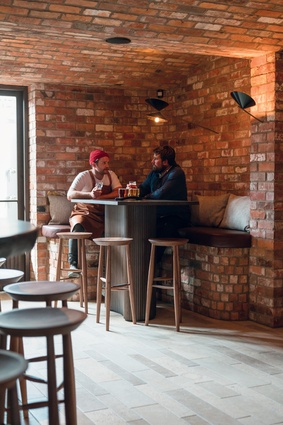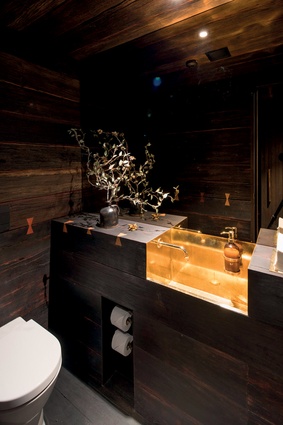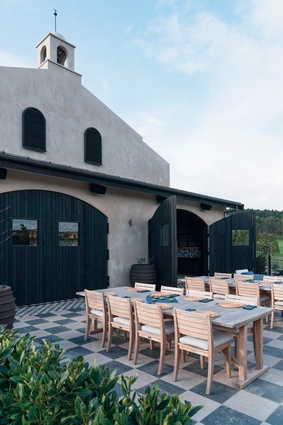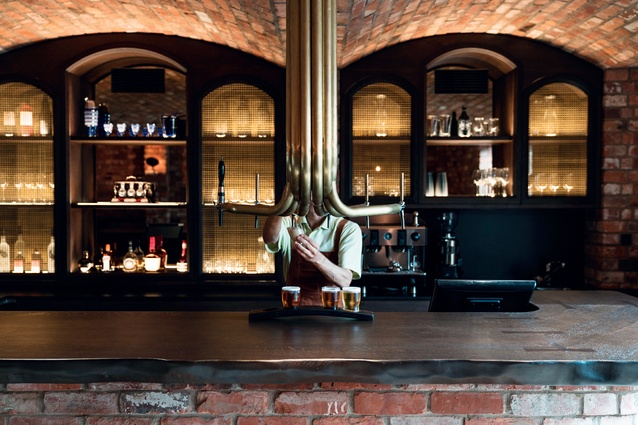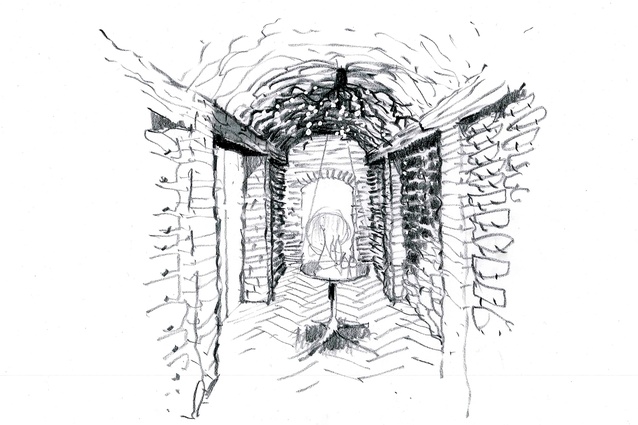Through the looking glass
It’s been three years in the making and Tantalus Estate in Onetangi Valley has finally opened its doors to customers. I arrive just before lunchtime on a Thursday and a few keen punters are there to taste the vineyard’s wines and have a look at the transformation of the property, which once verged on a junkyard with a rundown old building at its centre, but is now a top-notch estate designed by Cheshire Architects.
Young couple Carrie Mendell and Campbell Aitken purchased the property in 2013, with initial plans to open a hip craft brewery. However, these plans morphed into something a little more spectacular: the venue can seat 200 for large functions and the building houses a subterranean bar, brewery, opulent private dining room, wine library, as well as serving customers for meals and wine tastings in the restaurant.
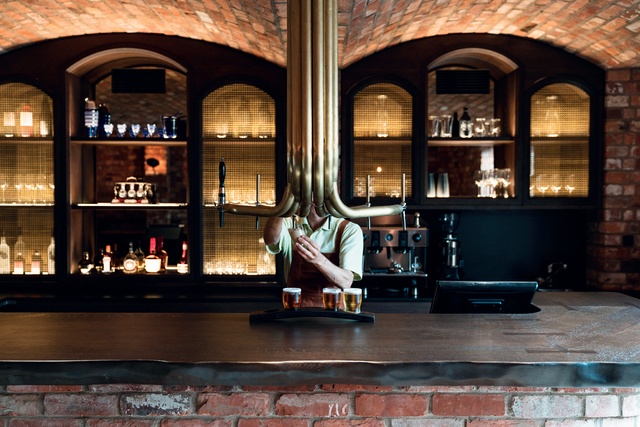
There are bones of the old building left in the new, the most obvious being the bell tower (which is actually a rebuild – more on that later) and the arches within the restaurant space, together with some external walls. But major changes have been made, starting with flipping the plan, says Nat Cheshire.
“The building had been built back to front and the front-of-house experience needed to be at the back of the building in the sun and in the vines, rather than at the front of the building in the shade, next to the carpark and the bus-turning circle.”
The new restaurant opens out onto a large deck area with a beautifully planted pollinator garden. A pavilion houses some additional covered seating. Inside, the restaurant is able to cleverly be converted into a series of small nooks for private diners, or a large open space. The bar is on castors and can be pushed away. There are curtains which can roll back and bi-fold doors to separate the spaces.
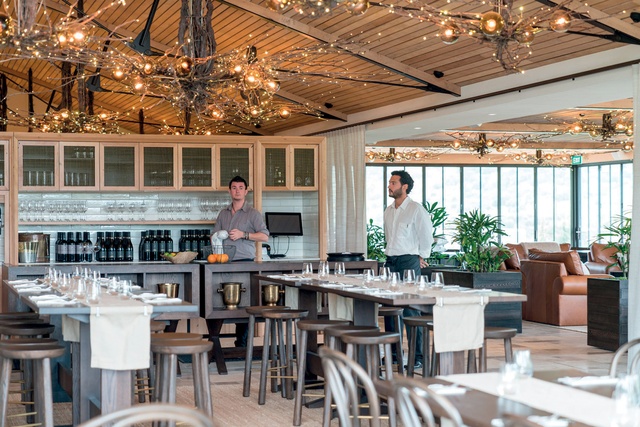
The interiors appear soft and warm, with straw-imbedded plaster walls, recycled Kauri ceilings and plenty of local stone. The most prominent feature of the restaurant is the lighting, which is sculpted from vines that were removed from the site. Materials in the restaurant are chosen to last and also to age gracefully. As Mendell explains, if some of the stone chips off the reception bar, it is all the better for the aesthetic.
Mendell and Aitken’s original vision to create a boutique brewery is still a large part of the design. The brewery, named Alibi, is located in a circular hole in the floor of the restaurant, where the action of brewing can be overlooked by visitors.
Downstairs, the Alibi bar, a masculine, sultry space decked out in leather and brass with a vaulted brick ceiling (the Hyde to the light-filled restaurant’s Jekyll, as Mendell puts it), opens onto the brewery, and the resident brewer, Bernard, a moustachioed, often-flannel-shirt-clad expert is around to talk beer to anyone who is interested.
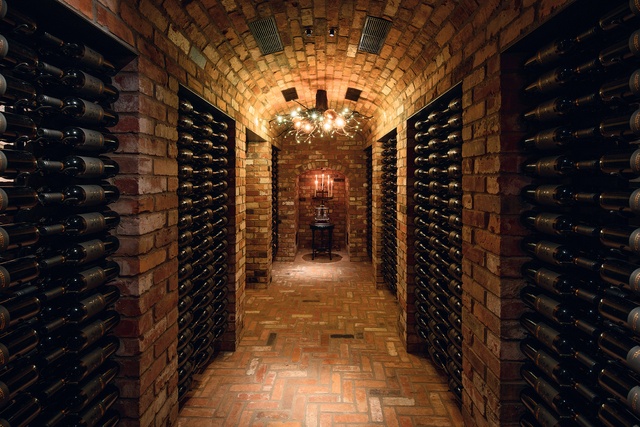
Back to that bell tower. The original tower turned out to be made from polystyrene, as did the roof of the building. There was some discussion about whether to rebuild the bell tower, but it was decided that it gave the building character, explains Cheshire.
“I liked the humility of just saying ‘OK, here’s this messy building but we’re going to pick up all the things that define it and make it really challenging and we’re going to turn those into the things that make it delightful rather than bringing in a completely new vision to it’, which would be to do with us as designers rather than the history of the place.
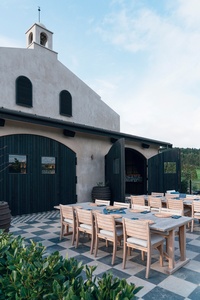
“It had this weird melange of Dutch, East, Spanish references. It’s like milking shed meets romantic French terroir, and so the building was incumbent in that it had this bell tower. I liked the idea that it was in part about a rehabilitation of this place.”
Mendell agrees, remembering how she and Aitken considered whether they would have chosen to have a bell tower, if they were to start from scratch with the building.
“But we had this perfectly-built rectangle in the plans and everything was plumb. We realised there was a presence in the bell tower and there is a history behind the bell too, because every bell has a name, so it was redesigned and the original bell retained,” she says.
Last but certainly not least, below, in the building’s vaulted brick dungeons, locked doors reveal a wine library and a private dining room. Located in what was once the loading dock, the private dining room defines opulence. Sections of the walls are covered in white tiles hand-painted in a deep blue by a local artist. A long table topped with a layer of blue glass has the appearance of a giant antique book.
At one end, a velvet couch invites intimate conversations. A collection of beautiful antique tantaluses is displayed on the wall. These are lockable liquor cases that allow the bottles to be visible, but unattainable. The room opens onto a courtyard with a checkerboard tile, which completes the Alice in Wonderland- like atmosphere. Inside, a secret door allows access to the wine library (also accessible from the corridor). This brick-lined room features the most splendid of light features, this one made from Manuka roots, and feels like a shrine to wine.
DESIGN STATEMENT
Three years ago a young couple and I set about making a craft brewery in an old cinderblock building they had bought. A few months later, they discovered that the ramshackle grapevines that surrounded it were salvageable. After a little work, they discovered grapes that were actually quite good. Then they made a little wine and discovered they were really, really good. So now we were making a winery and a brewery. And a restaurant. And a 200-person function space.
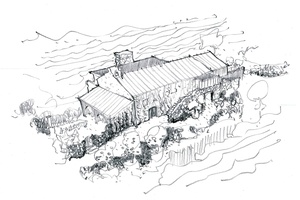
The architecture grew organically, keeping step with our evolving image of what was possible here. The old shed had an idiosyncrasy: a bell tower, and a couple of simple curves plastered into its gable-end. It was like a warehouse in thin drag: a couple of stilettos and some hasty make-up, passing itself off as a Dutch or Spanish mission church. Painted pale salmon.
We started by dignifying what we had found. Cloaking the building in a sandy plaster the sun-bleached colour of its soil. Rebuilding the bell tower, and using its voluptuous little arches throughout the interior in order to reconcile and integrate it with the whole. Extending the gable and dematerialising it in filigree steel and glass. Buttressing the building with rough blocks of local stone. Turning the front into the back and the back into the front, so that we heliocentric lot might sip our chardonnay in the sun, not the shade.
The making of wine and beer in this country is marked by the collision of romanticism and pragmatism, of old world and new, of terroir and technology. Ultimately, it is this collision that defined our intent in the interior. Unlike the intensity that characterised our handling of this polarity at Milse, however, Tantalus and Alibi are passed through a softer filter. In such bucolic surrounds, with an audience of gentle locals and holidaymakers in sunhats, we sought a gentler, less formal kind of experience. So there’s a kind of progression at work here.

At Alibi, one moves from a basement brewer’s bar, sunlit from a conservatory high above, through broad, brick-lined vaults, into spaces of increasing intensity: an enigmatic banquet room in deep indigo; a dense little wine library; a powder room completely wrapped in a saturated Azulejos mural, sliced open by a trough of brass.
Upstairs at Tantalus, broad split-stone entrance steps are as much landscape as building; next, a little conservatory entrance; an explosion into a tall tasting room; through an enormous arch into a horizontally-expansive dining room, the view racing from pale interior outward into striated landscape and rolling ridgeline. Underscoring everything is a commitment to the organic, the bespoke and the handmade. We’ve tried to gently prise open the potentials of those three ideals.
In pursuing the demands of an intense hospitality operation, we made lights from twisted old vine branches, plastered walls with straw, laid local stone against the chimney, made chairs from knotty timber, wove rugs from naked hemp, dyed fabrics and painted tiles by hand. In these principles – the organic, the bespoke, the handmade – we’re just trying to get spatial experience to stand in the same place as that to which the beer, the wine and the food should take you.
The brewers of Alibi, the vintners and winemakers of Tantalus, and the chefs of their shared kitchen: theirs is the endeavour that really counts. – Nat Cheshire of Cheshire Architects

